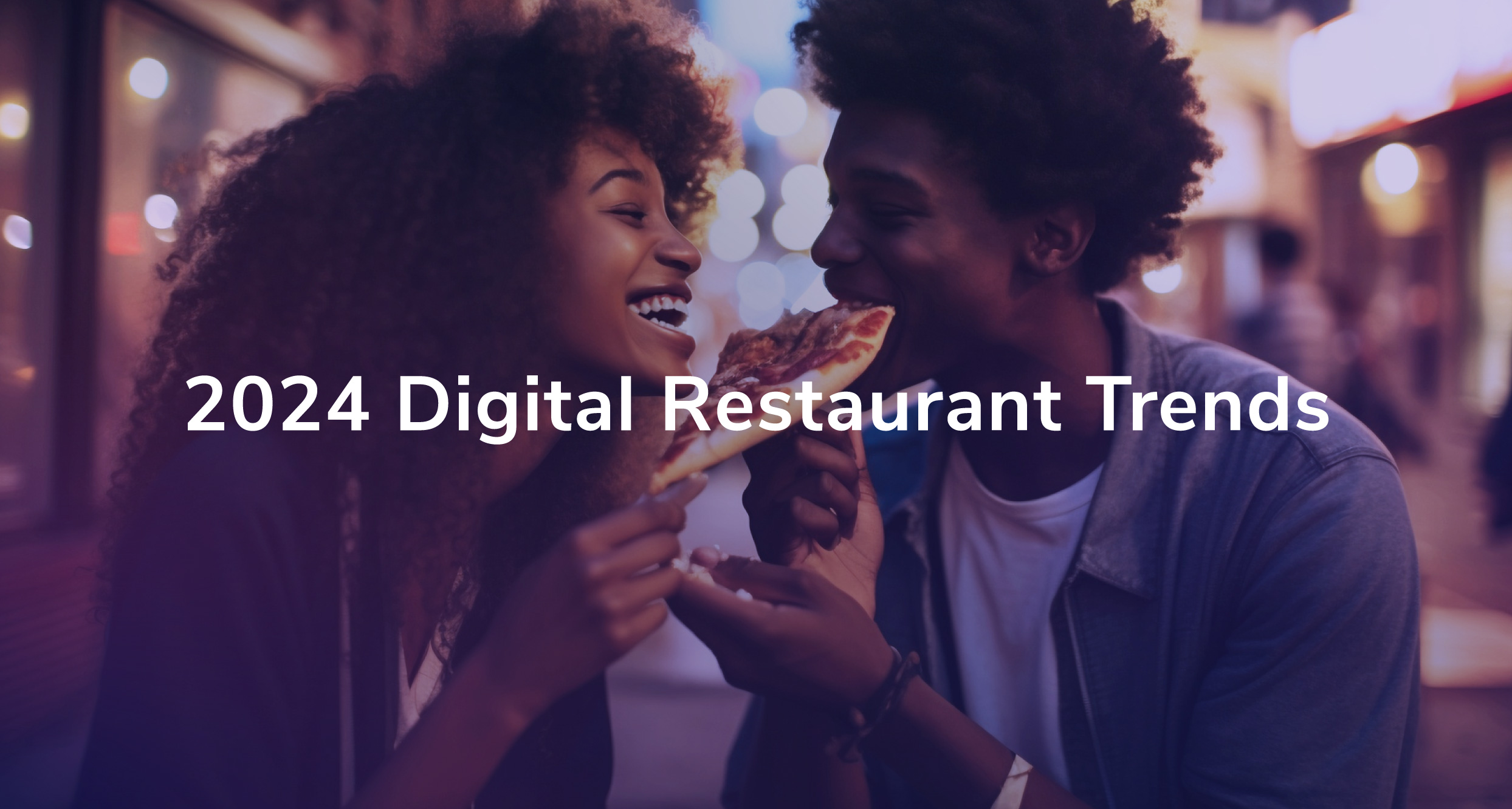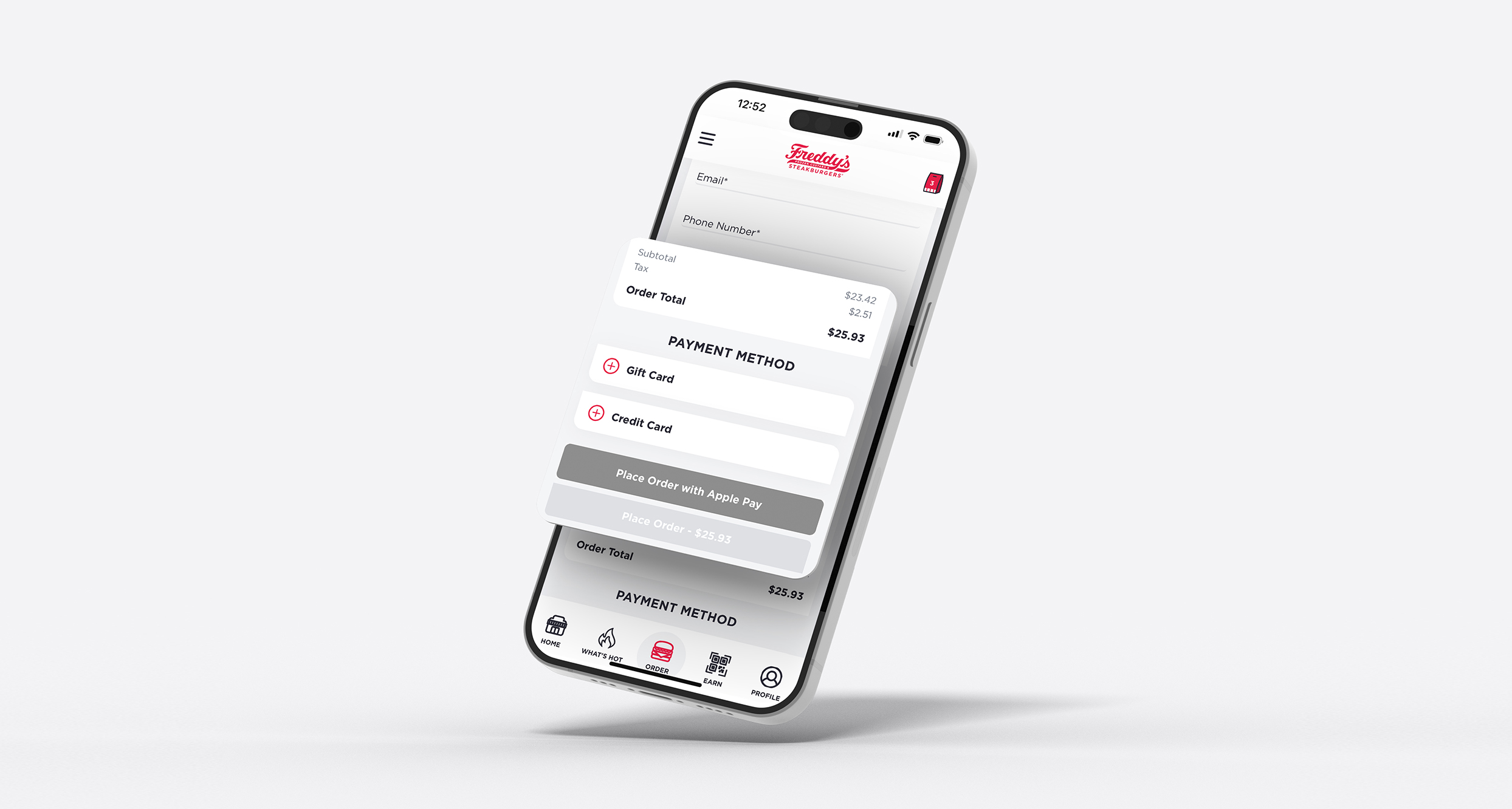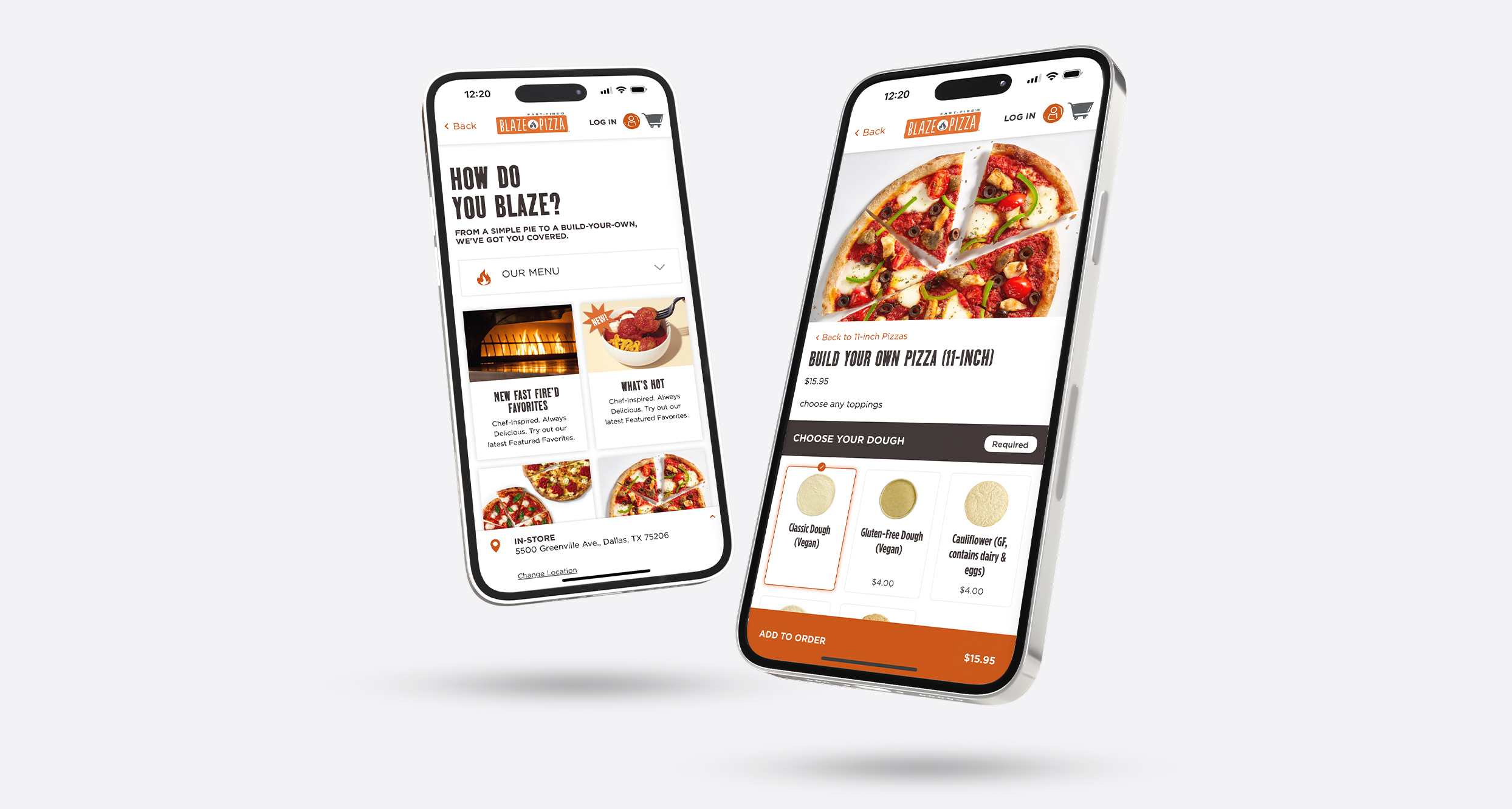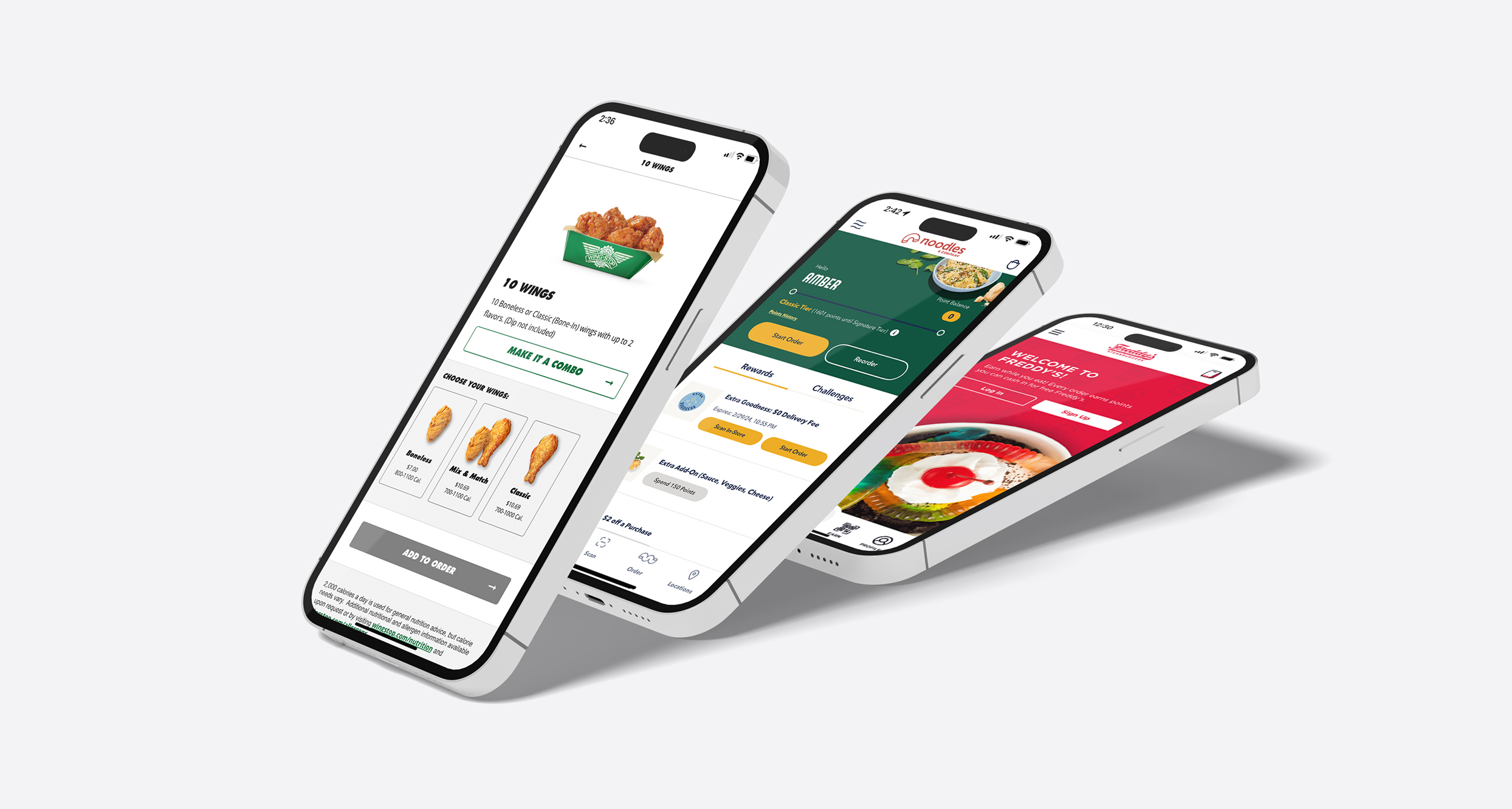Top 5 Digital Experience Trends for Restaurants in 2024

After restaurant brands faced a wild few years of change caused by the pandemic, the past year offered most brands a chance to reset – especially in terms of their digital experiences. Now that operations-influenced features such as contactless delivery, curbside pickup, and mobile payments have been implemented, operators can refocus on what matters most: the customer experience.
Through conversations with clients, observations of recent industry trends, and collaborations with industry experts, we’ve identified five key areas in which we expect restaurant brands to invest in 2024, especially during Q1 and Q2.
Streamlining Tech Ecosystems
Brands are realizing the platforms and systems they implemented before and during the pandemic are no longer serving their business needs. Entire tech stacks – from back-of-house systems to mobile apps and websites – are being re-evaluated. More specifically, many brands are seeking to restructure their technical ecosystems for efficiency and adaptability to conserve costs and ensure the platforms they use effectively meet their larger business goals.
Brands will be most successful when they partner with organizations that do two things: continuously re-invest in their platform technology and staff experts who offer hands-on support to restaurant marketing and IT teams to help them maximize the platform’s impact and value.
Prioritizing Payment Methods

As brands evolve their 2024 program goals to emphasize revenue and conversion, rethinking the checkout process within the digital experience is a high-impact and obvious place to start.
Many apps lack support for convenient payment methods that speed up order placement, so users opt to replace their saved credit cards with digital wallet options like Apple Pay, Google Pay, PayPal, and Venmo, which are now offered by big platforms like Amazon. In fact, some of the leading brands we work with see upwards of 30% of their orders being placed with digital wallets. In turn, users expect the apps they use to support these more convenient forms of payment.
Digital wallets can be difficult to integrate because they require coordination and configuration between the payment processor, ordering platform, and the business. This complexity has scared some brands away, but the right partner can help to streamline implementation.
Improving Platform Security
Malicious behavior has increased dramatically in the past two years across the retail industry, and specifically for restaurant and convenience store brands. Bad actors have become a serious threat to both users’ personal information and brand P&Ls. According to Cisco’s Consumer Privacy Survey (2022) we know that 81% of users believe the way a company treats their personal data is indicative of the way it views them as a customer. So, we expect CIOs and CTOs to put a lot of focus and effort into improving digital ecosystem security in 2024.
Some brands are focusing on tightening security within account creation and login. This process often starts with the back end, using concepts like app hardening, tighter Cloudflare standards, and third-party identity management platforms (e.g. Cognito) to reduce impact on the user experience. Unfortunately, these strategies alone don’t always offer enough protection.
In turn, front-end security features like passwordless sign-in, one-time passwords (OTP), and two-factor authentication (2FA) are common, low-impact complements to those back-end improvements. But because not all platforms offer these features out of the box, brands can expect some complex development and configuration effort to make these fit seamlessly into the user-facing experience.
Menu, Product Page Restructure & Redesign

When front-end, user-facing digital experiences took a back seat during the pandemic, brands tossed their existing roadmaps to focus instead on better supporting their store operators’ needs.
In the meantime, industry standards, design best practices, menu offerings, and user expectations have evolved dramatically. Now that brands can refocus, they recognize that they need to refresh their menu UX (including back-end ordering platform structure) and UI to catch up to industry and, most importantly, user expectations.
Menu restructuring can be daunting when balancing both digital and in-store menu displays, so keeping with an overarching strategy is key. Rich product and modifier imagery, streamlined item customization, personalized upsell recommendations, and actionable prompts and visual aids to guide users when they make errors, are all high-impact initiatives brands can pursue to evolve their menus and product pages.
Often, brands aren’t sure exactly how they want their menus to evolve. We offer a menu audit and assessment to provide recommendations to address both back and front-end improvements that align with evolved user expectations and are functional within the brands’ existing order and POS system tech stack.
Expanding Geolocation Capabilities
A silver lining of the industry’s rapid, pandemic-era shift to digital ordering is the availability of rich user behavioral data. Using integrated geolocation capabilities like geofencing and triggered location-based messaging, brands can streamline and enhance the user’s end-to-end experience and communicate with customers in more relevant and impactful ways.
Some great examples of how brands have brought in geolocation capabilities include:
- Trip Tracking & Triggering Product Prep: Operators are notified to begin preparing food when a customer is near the pickup location, ensuring orders are hot, fresh, and ready as soon as the guest arrives.
- Automated Waitlists: Customers who add their name to an online waitlist are queued and prioritized based on how far they are from the restaurant, ensuring their wait is minimal when they arrive.
- Visitation Data Collection: Integrated geolocation expands available user and operator data to help brands more effectively take action on how their users and operators behave.
In the last year, many of the shifts in ordering and handoff modes that changed during COVID have begun to settle, and brands can realize which handoff modes work best for their business strategies and operations. In reaction to that, they’re finding ways to use geolocation services like geofencing and triggered location-based messaging to drive users to order in new and evolved ways.
The Secret Ingredient to a Unified Tech Stack

Bounteous x Accolite offers a handful of services and capabilities to support brands pursuing the initiatives we’ve mentioned in this post. Most of those are wrapped around NomNom, our proprietary e-commerce platform built specifically for the restaurant and c-store industries. NomNom transforms a brand’s tech stack into a beautifully-branded digital experience that helps drive revenue growth, foster and strengthen customer loyalty, and empower brands to more directly engage with customers.
Strategic and product roadmaps change all the time, but often, these key areas of focus stay consistent throughout the year. If you enjoyed this list, check in again in July to get a peek at our predictions for the second half of the year and beyond.


